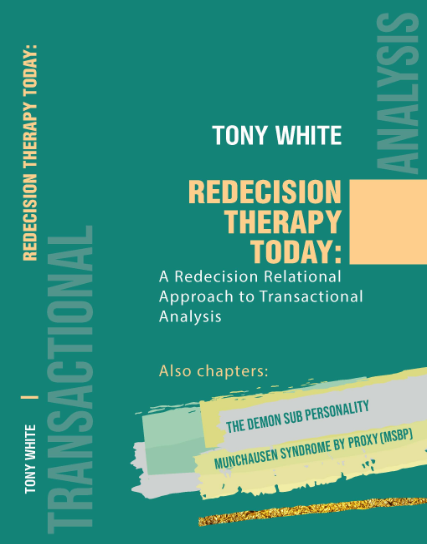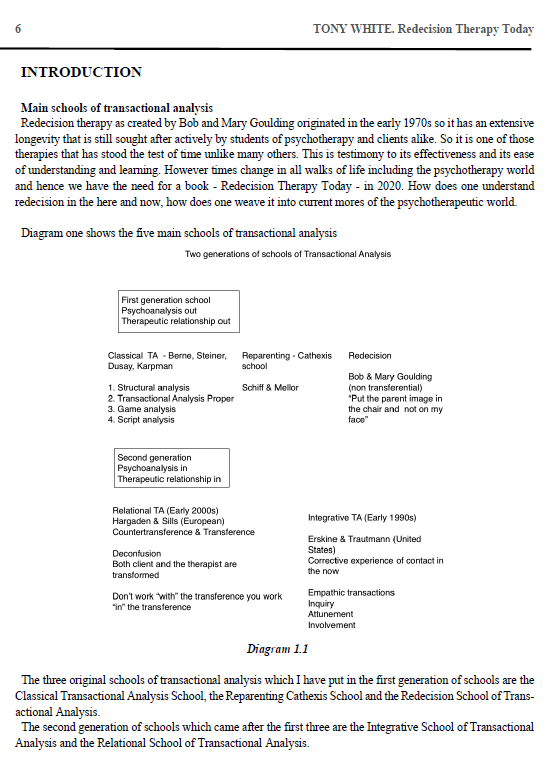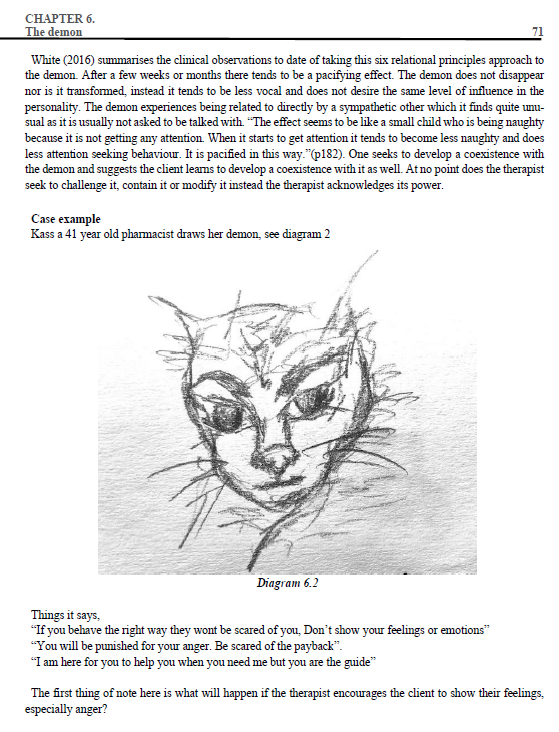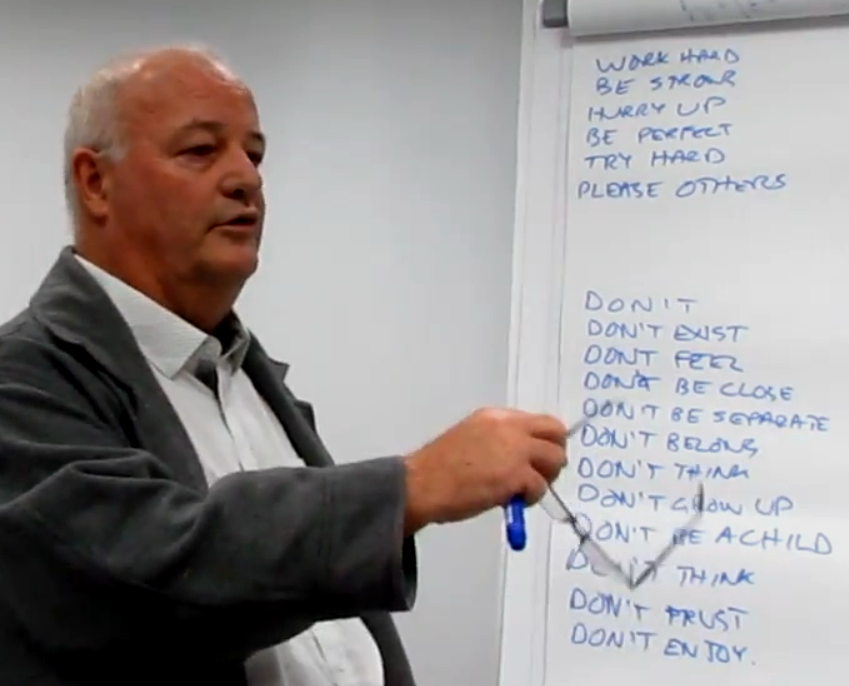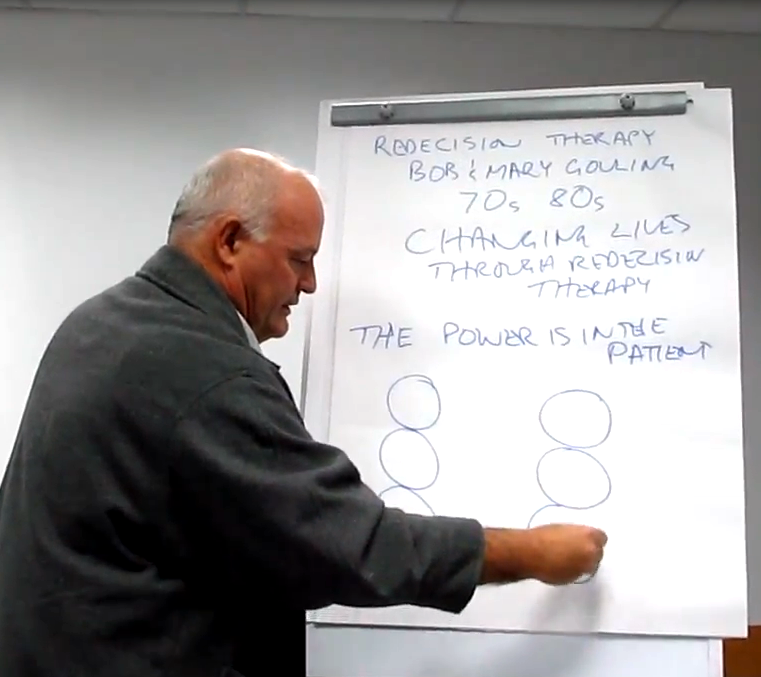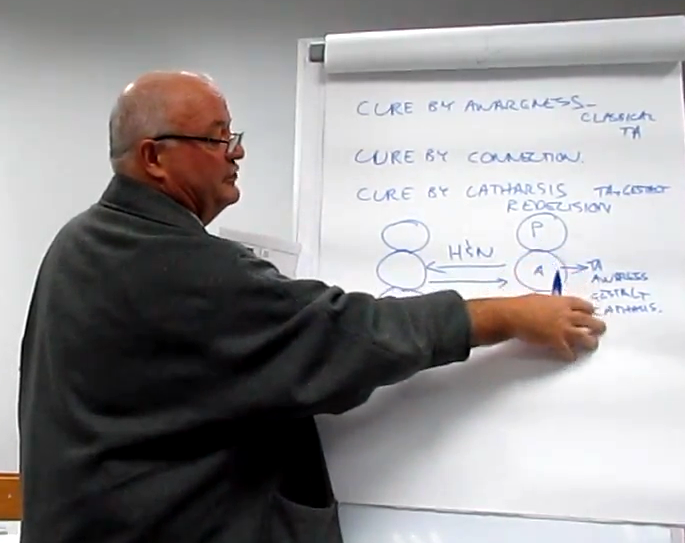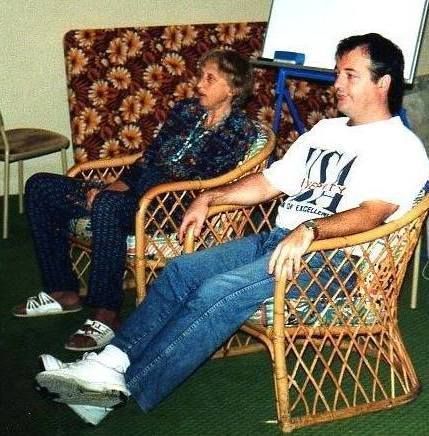|
Кількість
|
Вартість
|
||
|
|
|||
Tony White. Redecision Therapy Today: Approach to Transactional Transactional Analysis.
K.: Interservice, 2020. 180 p. ISBN 978-966-999-066-2 УДК 615.851:164.053
©2020 ANTHONY GILBERT BROWNING WHITE. LICENSOR Nataliia Isaieva 2020 E-mail: burbann@gmail.com
All part reserved. No part of this publication may be reproduced by any process whatsoever, without the written permission of the copyright owner, A.G.B. White, 136 Loftus Street, Leederville, Perth, 6007, Western Australia agbw@bigpond.com
TONY WHITE
REDECISION THERAPY TODAY:
A Redecision Relational Approach to Transactional Analysis
how to get the book?
AMAZON KINDLE VERSION - YOU CAN BUY IT HERE Kindle Price: $22.95
View book details on Amazon.com HARDCOVER PAPER VERSION - Price: €35.00
FILL DELIVERY FORM AND WE WILL SEND THE BOOK FOR YOU!
Focus of this book.
This book is a discussion about the psychotherapy approach known as transactional analysis, originally developed by Eric Berne in the late 1950s and early 1960s. It has survived until this time which is about sixty years which is quite an achievement. There are not many other psychotherapy approaches that can claim this especially as this approach is not just practiced by a few odd people around the world but has a large number of people still working with it all over the world.
In those sixty years various schools under its umbrella have evolved as one would expect. If that had not happened it probably would no longer be as widely used as it currently is. This book discusses two of those schools in particular, the redecision and relational schools, to see if they can in some way be reconciled, to take the best of both and use them in one overall approach. This is no easy task as in some ways they are quite disparate and have some quite basic dissimilarities in the theories behind them and different philosophical views about basic human nature and how therapy should proceed. None less so than wide differences in the use of and importance of the transference or therapeutic relationship.
This will be of interest not only to transactional analysts because of this but to any therapist. How can you have a therapy that can be both a one person non transferential therapy and a two person ‘highly’ transferential therapy. Or a therapy that is an exploratory non solution focussed therapy with a short-term solution focussed therapy embedded in that overall exploratory psychoanalytic approach.
PREFACE
This book is the end result of a long journey. My professional career began with training as a psychologist at university and simultaneously training in transactional analysis in a TA 202 training group. Eventually I qualified as a transactional analyst in 1981 with my primary supervisor being my father and my secondary supervisor being Mary Goulding. As you can imagine having one of the Goulding’s as my supervisor then the focus of my training was the redecision school. In addition to that, at that time in world transactional analysis redecision was one of the most powerful and influential approaches going around.
Once I had qualified as a CTA (or CM - Clinical Member as it was called then) I quickly took out a contract to train as a PTSTA (or PTM - Provisional Teaching Member as it was called then). Transactional Analysis and redecision were very prominent in my methodology as a therapist and as a way for me to understand the human psyche. After my university studies were over I was fortunate enough to get a two year traineeship or mentorship with a local psychologist who was a psychoanalyst. This meant I was also trained in psychoanalytic child psychotherapy very early in my career. This meant that I also had a grounding in psychoanalysis as well.
I have continued to work with children in a psychoanalytic way for my entire career as a psychologist and I still do even to this day. This is somewhat ironic as I used both transactional analysis and psychoanalysis as my primary therapy approaches. As you will discover in this book I talk a lot about the relationship between transactional analysis and psychoanalysis and how both Berne and the Gouldings managed them.
I have never taken a substantive break from working as a psychotherapist, so I have been in this field for my entire career. Those who have been influential for me include of course Bob and Mary Goulding as well as John McNeel. When I first started writing for the Transactional Analysis Journal John McNeel was the editor and he also help me considerably in this way. My first serious experience as a client of redecision therapy came when I was 22, at a marathon therapy group run by John McNeel and Ellyn Bader and I still remember that event to this day. I continued to meet John and Ellyn at various workshops over the years. Finally of course there were my parents who were also both transactional analysts and psychologists just like I was. They both were also faculty members of the Gouldings training institute - The Western Institute for Group and Family Therapy - until it closed operations. Whilst I have also had influences from others in the areas of family therapy, sex therapy, drug and alcohol, cognitive behaviour therapy, bioenergetics and so on it clearly is redecision therapy that has been my core approach. However, all this was a very long time ago and it is now 2020, whereas I began my therapist journey in 1977.
Times change and therefore therapies have to as well to fit with the current cultural mores and standards. When I began the Human Potential Movement was in full swing and that now certainly has gone. Therapy was very different then, therapy training was different as was the whole organizational structure of the profession of psychotherapy.
This is where my journey took another turn and I must acknowledge my partner, colleague and assistant Nataliia Isaieva and the influence she has had on me, none less so than with this book. The motivation for a book that explains how redecision therapy can be done now in the year 2020 and onwards comes a good deal from her. I certainly wish to thank her for that and it may never had happened without her influence on me in this way.
Finally I must acknowledge my clients and my students of which there have been a considerable number over about forty years. It is from them whom I have mainly learned my trade and begun to understand how the human psyche works. Thank you all.
TONY WHITE, Psychotherapist, Transactional Analyst
Perth, 2020
TABLE OF CONTENTS
PREFACE
INTRODUCTION
Main schools of transactional analysis
First psychoanalysis
Second the therapeutic relationship or transference
CHAPTER 1. The Power is in the Patient
Locus of control
Relational locus of control
Redecision relational therapy philosophy
Redecision relational is about I-ness and we-ness
CHAPTER 2. Redecision therapy contracting
Contracts
Redecision relational contracting
Bilateral or unilateral contracts
Demand contracts
Get rid of contracts
Parent contract
CHAPTER 3. Cure by transference
Impasses, games and enactments
First degree impasse
Second degree impasse
Third degree impasse
Treatment of impasses
Games and enactments are two different psychological phenomena.
Three types of psychology (psychotherapy)
Transference cure summary
Case example
Conclusion
CHAPTER 4. Early decisions and relationship ruptures
Introduction
Theory of early decisions
Relational TA and injunctions (or ruptures)
CHAPTER 5. Injunctions described
Don’t exist
Homicidal and suicidal
Don’t be you
Don’t grow up
Don’t make it (succeed)
Don’t be important
Don’t be close
Don’t belong
Don’t be separate
Don’t be well (sane)
Don’t think
Don’t feel
Don’t feel ‘x’, feel ‘y’
Don’t express your feelings
Feel ‘x’, but express ‘y’
CHAPTER 6. The demon
How Berne saw the demon
Characteristics of the demon
Development of the demon
Further features of the demon
Demon, id and the shadow
Dealing with the demon
Case example
CHAPTER 7. Munchausen syndrome by proxy (MSBP)
Introduction
Alternate forms of MSBP
Case study
Two types of MSBP
The two MSBP transactions
MSBP and family dynamics
MSBP and the authority problem
Summary of motivations for MSBP
Epilogue
CHAPTER 8. Postscript
References.
©2020 ANTHONY GILBERT BROWNING WHITE
Published T.A. Books 2020
All part reserved. No part of this publication may be reproduced by any process whatsoever, without the written permission of the copyright owner, A.G.B. White, 136 Loftus Street, Leederville, Perth, 6007, Western Australia agbw@bigpond.com
The primary territory will include Ukraine and Russian language populations worldwide LICENSOR Nataliia Isaieva 2020 E-mail: burbann@gmail.com
ISBN 978-966-999-066-2 УДК 615.851:164.053

He specialises in working with suicidal individuals and adolescents an is also recognised as a specialist of Redecision therapy in transactional analysis. In 1988 he was awarded the inaugural Goulding Award for his contribution to Transactional Analysis. In 2011, he received the British Medical Association Medical Literature Award in the Psychiatry section for his book Working with Suicidal Individuals.
During his 40 year practice, he became the author of a large number of professional books and articles, the topics of which are diverse and include various aspects of modern psychotherapy.
For more than 10 years he has been holding redecision therapeutic marathons annually in different European countries. He also lives and practices in Perth, Western Australia.

